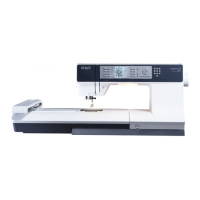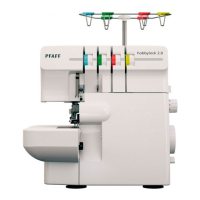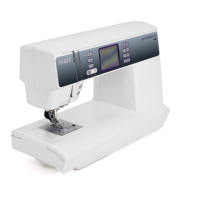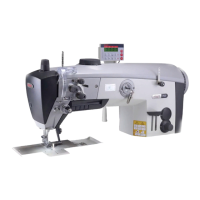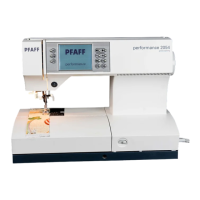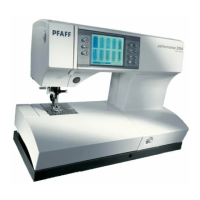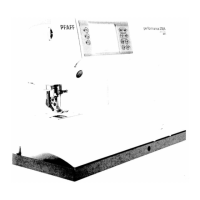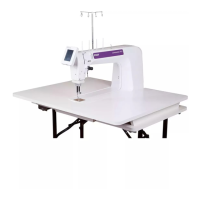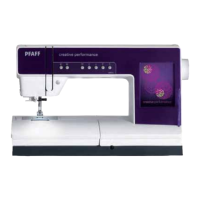23
A
Corded buttonhole (Stretch fabrics)
When sewing buttonholes in stretch fabrics we
recommend cording the buttonhole to increase the
stability and to keep the buttonhole from stretching
out.
/RRSDSLHFHRIKHDY\WKUHDGRUSHDUOFRWWRQ
RYHUWKHÀQJHUDWWKHEDFNRIWKHEXWWRQKROH
IRRW%3XOOWKHWKUHDGWDLOVXQGHUWKHIRRW
WRZDUGWKHIURQWWKHQVHFXUHDURXQGWKHÀQJHU
at the front of the foot.
6WLWFKDEXWWRQKROH7KHVDWLQEXWWRQKROH
FROXPQVZLOOVWLWFKRYHUWKHFRUG
:KHQWKHEXWWRQKROHLVÀQLVKHGOLIWWKHFRUG
RIIWKHÀQJHUDQGSXOORXWWKHVODFN
4. Cross the cord in front of the needle and thread
cord ends into a large needle, pull to the wrong
side and knot ends before cutting excess.
5. Use the seam ripper to carefully open the
buttonhole.
Sew on a button
7RVHZRQDEXWWRQUHPRYHWKHSUHVVHUIRRW
and select the button sewing stitch, number 19.
2. Lower the feed dogs.
3. Place the button under the presser foot holder.
Turn the handwheel slowly to make sure the
holes in the button are aligned with the swing
of the needle and the width is appropriate for
WKHDFWXDOEXWWRQ,IQHFHVVDU\DGMXVWWKHVWLWFK
width to accommodate the width between the
holes.
<RXFDQLQFUHDVHRUGHFUHDVHWKHQXPEHURI
stitches that will fasten the button on the fabric
in steps of two, using the stitch length buttons
$7KHVHWQXPEHURIVWLWFKHVLVLQGLFDWHGRQ
the display. 6 stitches is default.
6WDUWWRVHZ7KHPDFKLQHZLOOVHZWKH
program for you and then tie-off and stop.
1RWH8VHWKHPXOWLSXUSRVHWRROWRFUHDWHDWKUHDG
VKDQNIRU\RXUEXWWRQ<RXFDQDOVRXVHWKH6HZRQ
%XWWRQ)RRWDYDLODEOHDVDQRSWLRQDO
accessory.
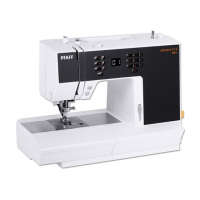
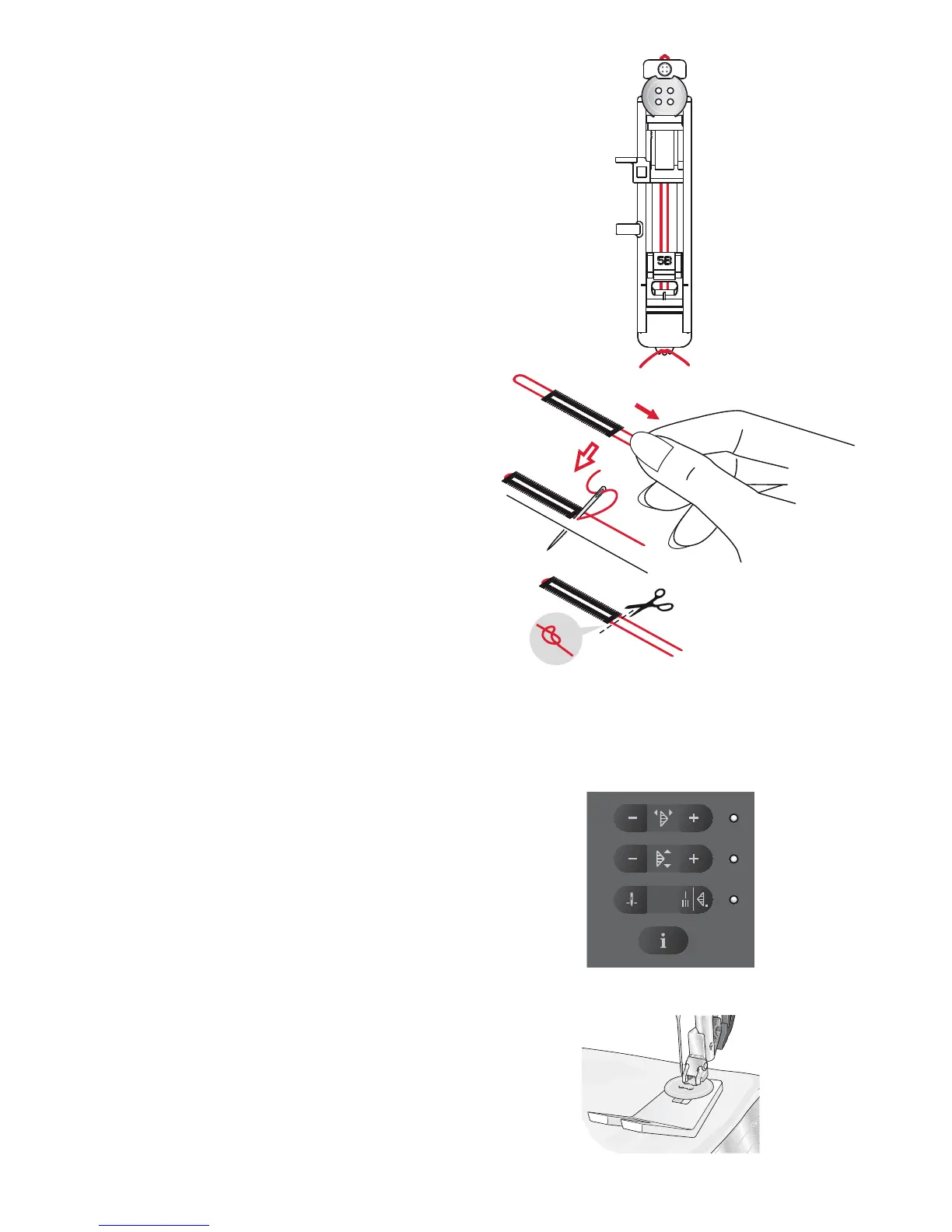